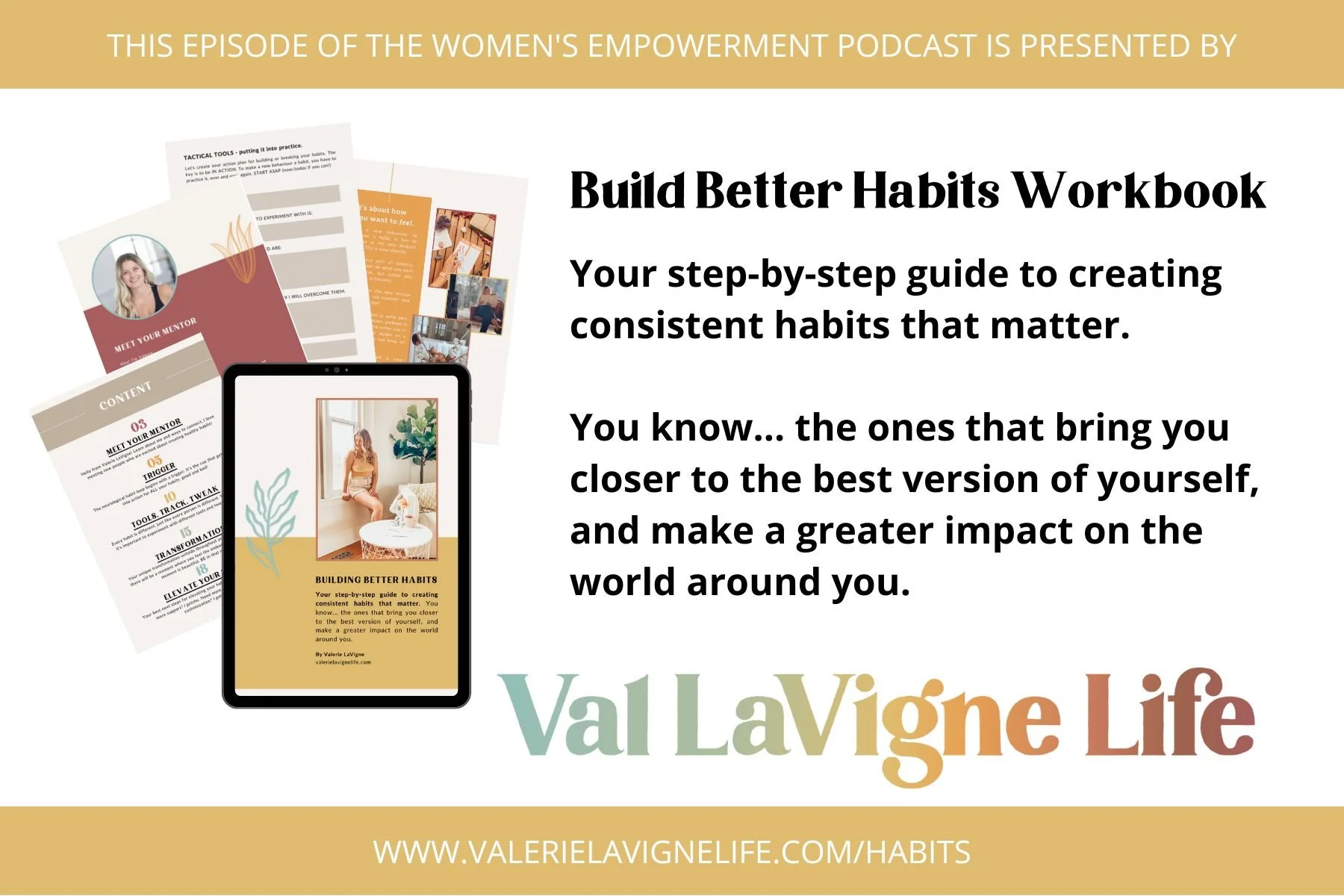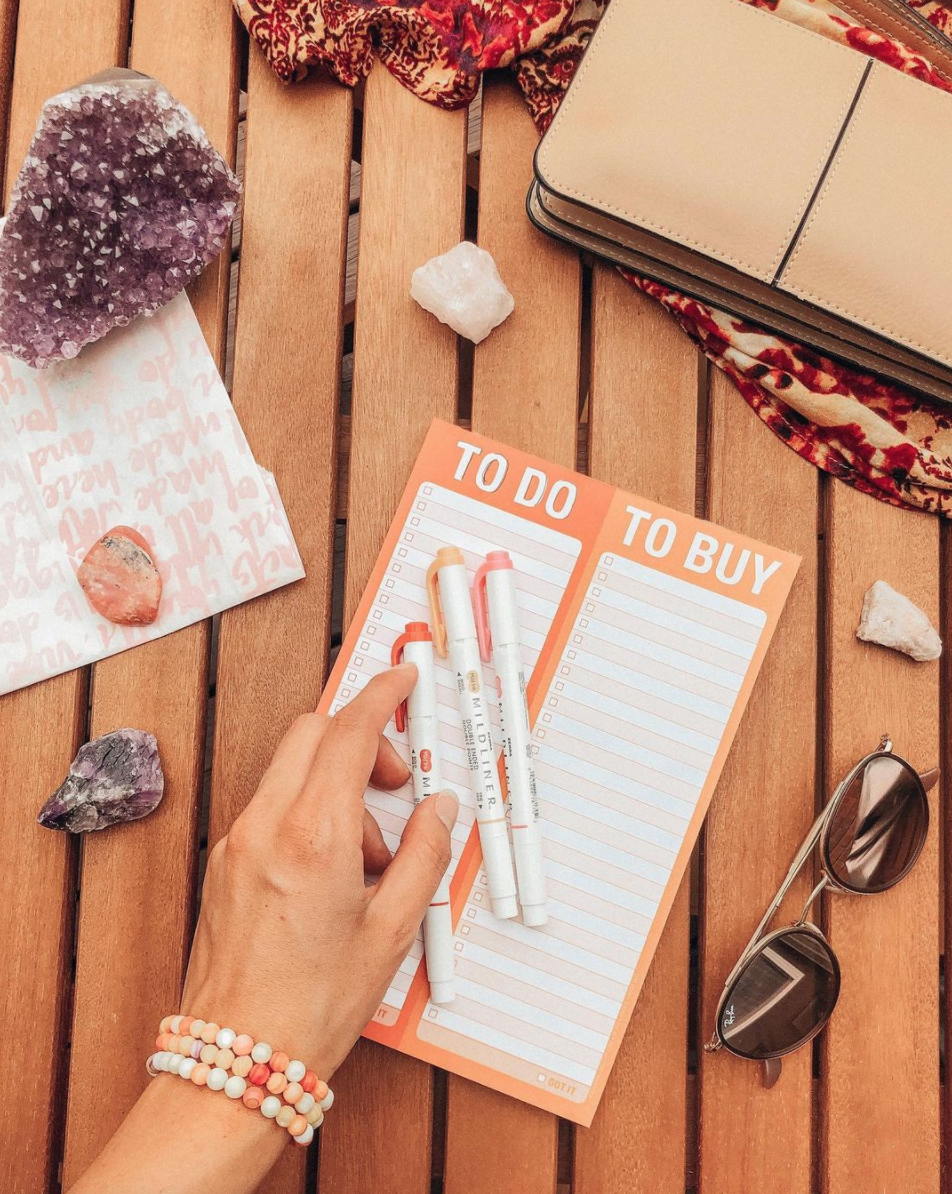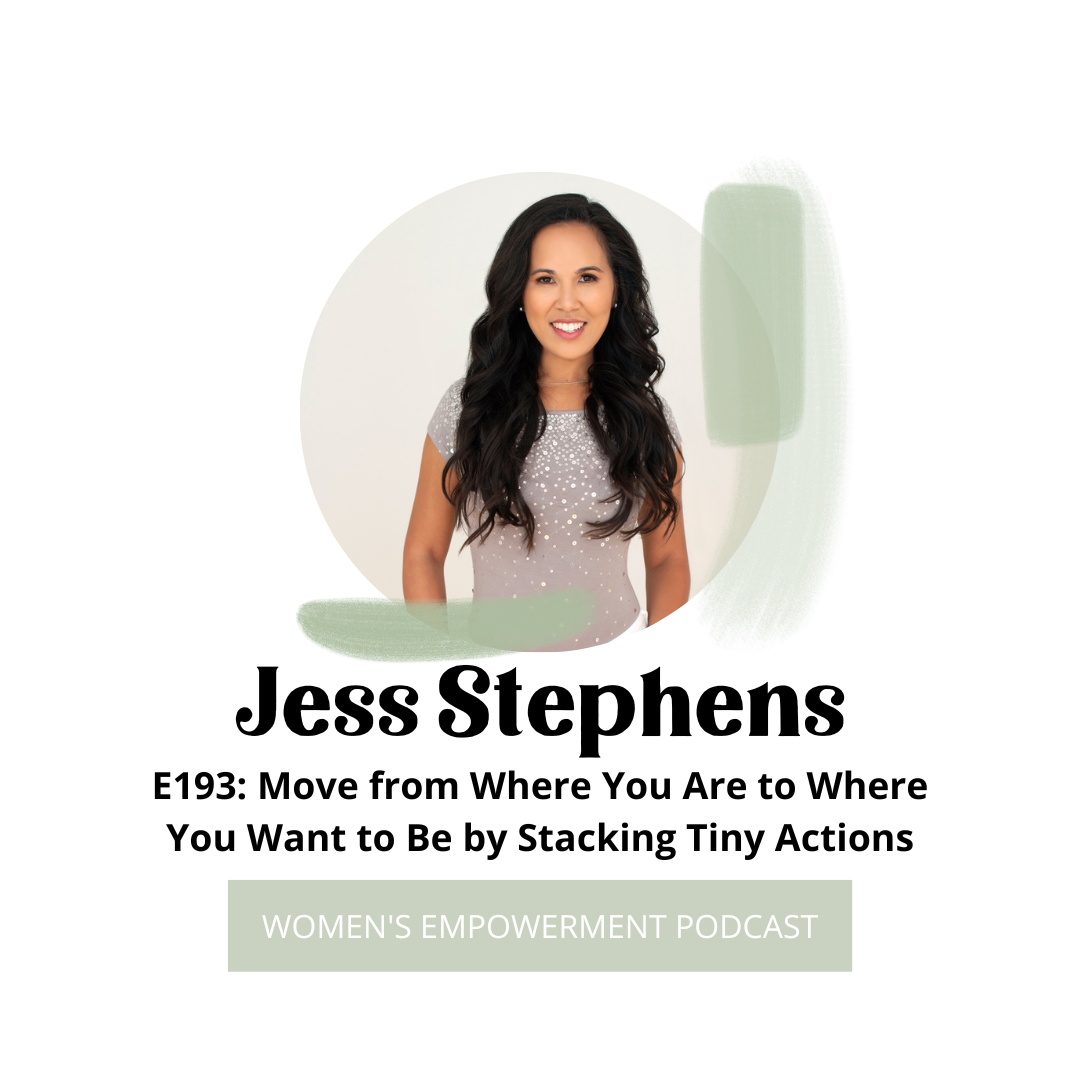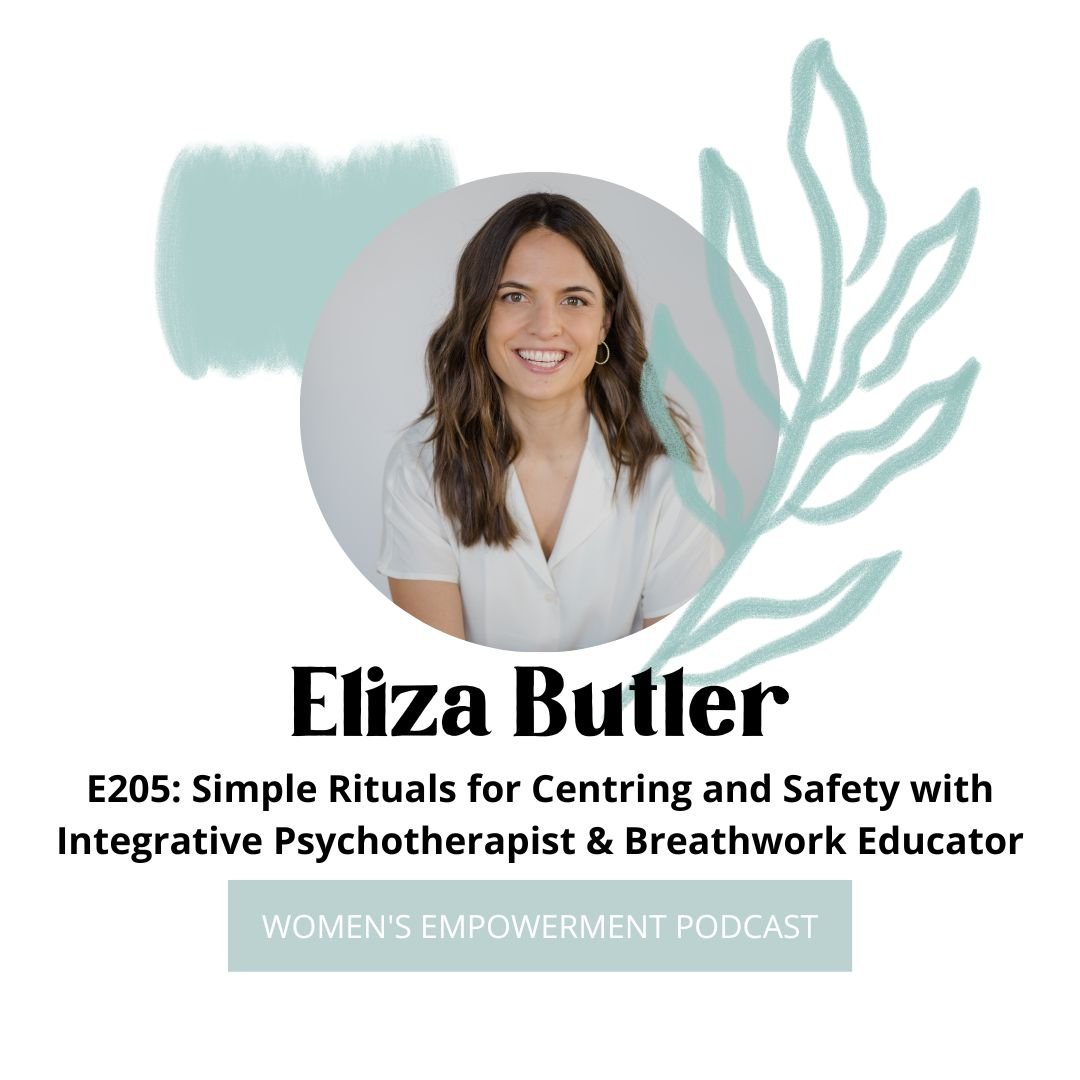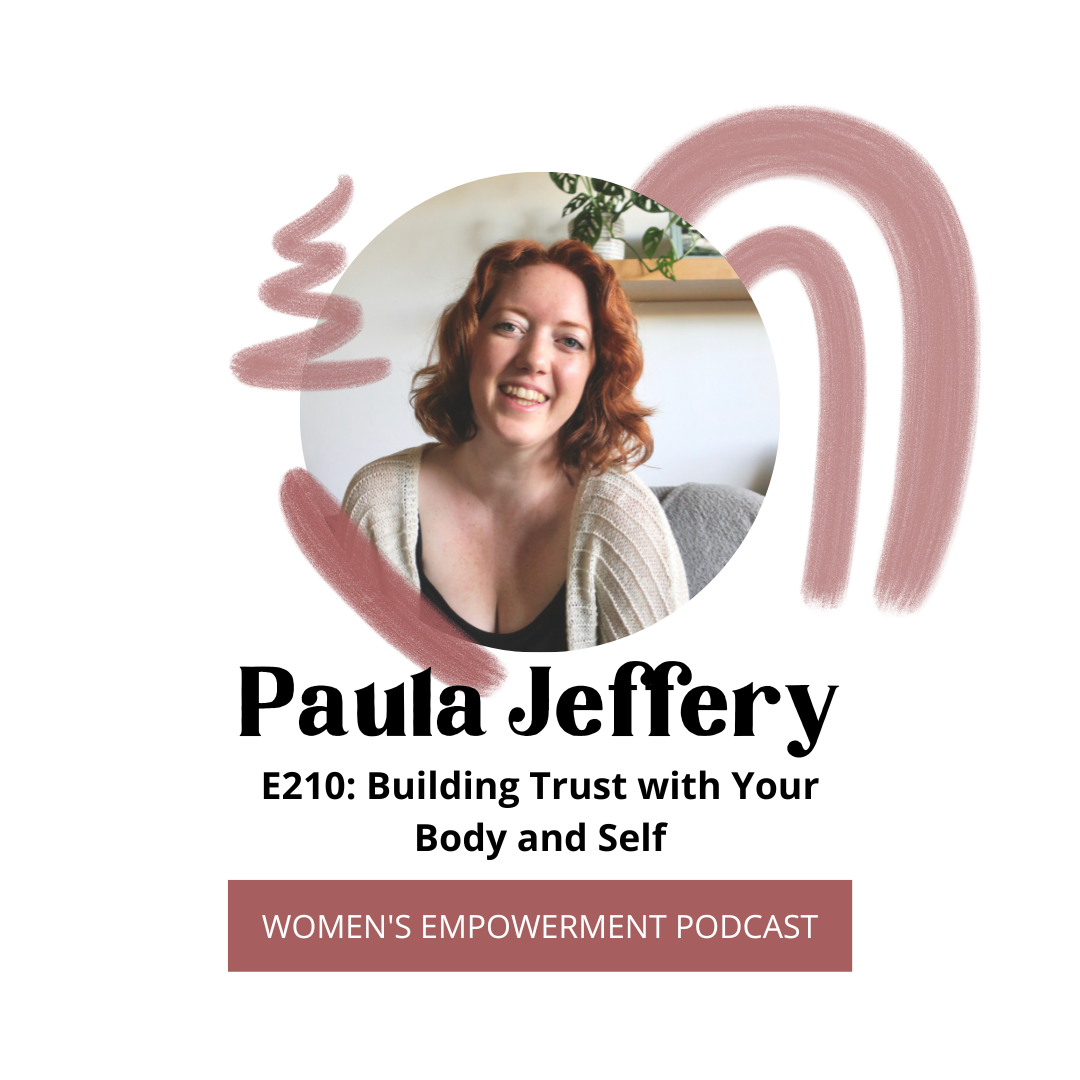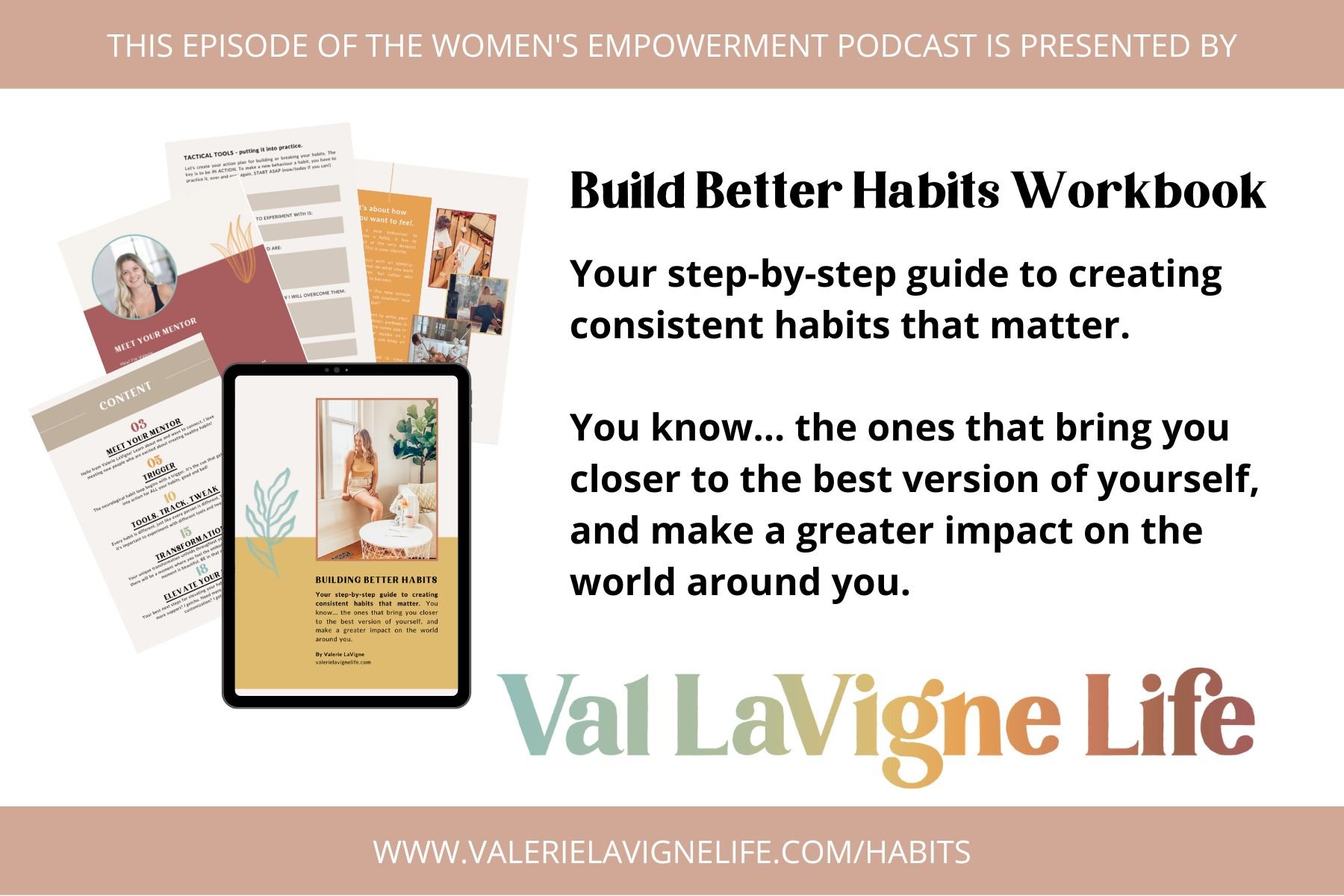Leave a review on Apple Podcasts
BOOK: LIMITLESS by Jim Kwik
[00:58] Welcome back to the Women’s Empowerment Podcast, I am you host and Healthy Habit Mentor, Valerie LaVigne.
I just finished reading the book Limitless by Jim Kwik, and within the first few pages I KNEW I would be sharing this book with you. The subtitle for this book is “upgrade your brain, learn anything faster, and unlock your exceptional life.”
Earlier this year I decided to create a new type of episode for the show. Essentially, it’s like a book report of specific books I’ve read that I also use in my coaching sessions. There have been two other episodes like it so far:
Episode 182: The Power of Passion and Perseverance are the Keys to Success (Grit by Angela Duckworth)
Episode 174: Book Report: The Four Tendencies by Gretchen Rubin
In these episodes, my intention is to share some of the key takeaways from the book, perhaps inspire you to also purchase the book to read yourself, and also to share with you how I apply these learnings within my coaching sessions.
There are currently three ways to work with me:
The first is through my 1:1 Make a Habit Mentorship. This is a customized, and closed container where we work together on your specific habits over three months time.
The second way to work with me is in our Healthy Habit Membership. This is a virtual community where we learn, and grow together through our habits as well as monthly trainings.
And lastly, I host a 21 Day Healthy Habit Challenge which runs 3-4 times per year called Elevate Your Life. In this challenge you get a backstage pass into the monthly coaching program as well as extra support from me for 21 days.
I was recommended to read this book by a friend who absolutely LOVED IT! She loved it so much that she said, “put down whatever you’re reading, read this book, and then come back to what you’re reading because, LIMITLESS will teach you how to learn better, read faster, and remember more of what you’re reading.” Needless to say, I bought the book.
There are a lot of things I like about LIMITLESS, and one of them is that it’s very organized. The book has four clear parts. Within those parts are clear and to the point chapters – if you know me, you know I like a good “no fluff” personal development book.
I also enjoy the alliteration of these four parts: MIND, MINDSET, MOTIVATION, METHODS
[03:47] PART ONE: MIND
Kwik uses his love of X-Men and superheroes to tell the hero's journey, which starts with “freeing your mind” in the call to adventure. When he talks about becoming LIMITLESS, what he means is removing limiting labels, beliefs, and methods which he describes in the “Limitless Model.”
(p.17) “You can learn to be, do, have, and share with no constraints… If you are not learning or living at your full potential, if there’s a gap between your current reality and your desired reality, there is a reason: there is a limit that must be released and replaced in one of three areas:
A limit in your mindset – you entertain a low belief in yourself, your capabilities, what you deserve, or what is possible.
A limit in your motivation – you lack the drive, purpose, or energy to take action.
A limit in your methods – you're taught and are acting on a process that is not effective to create the results you desire.
This matters in our day and age because of four “Digital Supervillains”
Digital Deluge: There is too much information for us to be processing and not enough time.
Digital Distraction: We experience constant distraction with the availability of technology and social pressure to be online and active on social media.
Digital Dementia: Oversusing digital technology results in the breakdown of cognitive abilities and our short-term memory is deteriorating because of it.
Digital Deduction: We rely on technology to answer any and all of our questions, which means we aren’t practicing or using our critical thinking, problem solving, and creativity.
Something else I really loved about this book was that he has placed little bubbles labeled “KWIK START” throughout the chapters. These are actionable tips to do as you’re reading.
To be honest, this is something I thought would have been incredibly helpful in the last book I read and shared on the podcast, GRIT by Angela Duckworth. I loved the book, but wished there were more calls to action to practice applying it into my own life.
Part of freeing your mind is learning how to read and remember the books that you read using his acronym FASTER:
FORGET – have a beginner’s mind before reading, attending a seminar/workshop, or learning something new.
ACTION – take action on the new learnings (like his KWIK STARTS), Sharing what you’ve learned with your community, or putting the learnings into practice.
STATE – all learning is state dependent. You’re more likely to learn and remember if you choose joy, satisfaction, curiosity.
TEACH – teach the information you’ve learned to someone else.
ENTER – schedule personal development times into your calendar. This can be to read, learn, or apply your learnings.
REVIEW – to help you remember what you’ve learned, actively recall the material over multiple spread out sessions.
I love this method for reading, learning, and retaining the information, and I also use it similarly in each coaching session.
(Forget) We begin by coming into the session with an open mind. Since you’re coming into healthy habit coaching, I feel that it is safe to assume you're searching for something “different.” So let’s start with a clean slate.
(State) Within the session I keep things as positive and upbeat as possible, because I want you to see and connect to what could be, and the possibility of reaching your goals. When you can see it in your mind, or feel it in your body, you are more likely to achieve your goal.
(Action) At the end of every session there is “homework” or an action plan. Part of that action plan is (Enter) scheduling your habits, routines, and rituals into your calendar.
In follow up sessions, clients often share what they have been able to achieve and to my excitement, (Teach) they have already shared some of what they’ve learned with their friends, family, and social networks. (Review) of course each new session begins with an open mind, as well as a review of what has worked and what hasn’t.
I think a lot of people don’t realize how much LEARNING actually goes on when it comes to creating new habits. We are forming new neural connections and pathways in the brain when we decide to start a new behaviour. The habit forms when that neural pathway is maintained and becomes automatic. But this doesn’t happen overnight – it takes repetition and practice, which is why the three month container in the Make a Habit Mentorship is so important. It takes on average 66 days for a person to create and stick to a habit.
[09:38] PART TWO: MINDSET
In part two of the book LIMITLESS, we dive into “The What” or the limitless mindset. Our mindset is SO IMPORTANT, because our thoughts create our feelings, which then lead to our actions, which then become our reality. It creates a cycle of what we think we become, and how we act, or what we become is what we think about. Around, and around we go!
The fact is, every single person on this planet has limiting beliefs. The key is to reframe them so that they don’t take over our minds and leave us stuck in old patterns or feeling defeated by our goals.
(p.80) Kwik shares his three keys to minimize limiting beliefs and develop a superhero mindset:
Key 1: Name Your Limiting Beliefs
Limiting beliefs “might have to do with your talents, your character, your relationships, your education, or anything else that leads to internal whispers that you can’t be what you want to be. Start paying attention right now to every time you tell yourself that you’re incapable… Being aware of how you’re holding yourself back with your self-talk and spending some time to get to the source of these beliefs is extremely liberating because once you’re aware, you can begin to realize these aren’t facts about you, but rather opinions. And there is a very good chance that these opinions are wrong.”
Key 2: Get to the Facts
The toughest part of limiting beliefs is that they play heavily on our emotions. If we keep repeating them, they can wear us down. It’s important to remember that these are facts that are often wrong, and the better we get at quieting these limiting beliefs, the better you become at keeping distractions down during times of big growth, change, and challenges. “So when you’re examining the facts behind your limiting beliefs, be sure to consider two things: whether there is in reality any evidence to drive that you are truly hampered in this area and whether even that evidence was tainted by the noise in your head.”
Key 3: Create a New Belief
“The most essential step [is] to generate a new belief that is both truer than the [limiting beliefs] you’ve been accepting and beneficial to the limitless you that you are creating.”
Mindset is huge in any coaching industry. If you want to create change in your life, you’re going to have to start with your thoughts; your mindset. Limiting beliefs come up often, and even though there are many methods for overcoming them and replacing them, I have definitely found that working with a coach combined with personal practice has been the most effective way to overcome these.
In my experience coaching, as well as working with a coach myself, I have seen time and time again how powerful it is to have someone else hold up a mirror and ask questions about the beliefs that have come up. Does this feel true for you or does this feel like a mindset block? Is there evidence to support this? Etc.
You can only have so many conversations with yourself telling you, inner voice, or Inner Mean Girl (as I’ve referenced in the past), without feeling like you’re taking crazy pills. Having a coach to hold the space for you and keep you on track with what IS true can be very helpful.
With that being said, your coach is not with you 24-7, but your inner voice(s) are. Both the Inner Mean Girl, and the voice of your Higher Self. While it is helpful to have conversations with your coach, developing a healthy mindset and positive self-talk habits are extremely supportive in truly mastering your mindset for optimal performance and growth.
This is something I often work on with my coaching clients. It’s usually around the time, maybe a few weeks into working together, when their motivation starts to simmer and the changes are so small they start to fall back into old patterns and beliefs. When this happens, we start to tweak specific parts of our routine, as well as come back to the strong foundation we’ve created to really remember WHY it is we wanted to build these habits in the first place. Which brings us into part three of the book…
[14:03] PART THREE: MOTIVATION
This part of the book is about our “Why.” To create sustainable motivation we need purpose, energy, and small simple steps.
When it comes to purpose, Kwik references Simon Sinek’s book Start with Why and quotes Sinek when he writes, “People don’t buy what you do, they buy why you do it, so it follows that if you don’t know why you do what you do, how will anyone else?”
Whether you’re working with me in the 1:1 Make a Habit Mentorship, Healthy Habit Membership, or Elevate Your Life 21 Day Challenge, we always start with your feeling word. Why? Because it is the foundation of why you’re doing what you’ve set out to do.
It is the root of your habit, it is the motivation for your actions, and it is the purpose for your transformation. Your feeling word is your WHY.
For example, Robyn is currently in our Elevate Your Life Healthy Habit Challenge and her feeling word is “light.” Her habits are to run 4x/week as well as walk daily to reach 10k+ steps. When Robyn is at home relaxing on the couch and checks to see that she’s only done 7k steps, and she hasn’t been on a run today, it’s not the habit that propels her forward, it’s her purpose. I think it’s safe to assume that Robyn would rather keep relaxing and call it a day, but she doesn’t. Why? Because staying on the couch would not make her feel “light” in fact, I would say it would make her feel the opposite. So her feeling word then motivates her to get up and go for a walk to reach her 10k step goal.
Personally I very much dislike running. I love this goal for Robyn, but it would not work for me at all! Why? Because I do not find any passion in running.
Kwik talks about (p.117) On Purpose Passion saying, “finding your passion is not about choosing the right path or finding the perfect professional destiny. It’s about experimenting to see what ignites your joy. Passion comes when we rediscover our authentic, alive self, the one who has been muted and buried beneath a pile of other people’s expectations. There is not a single right path to be discovered or revealed.”
You might have multiple passions and that is okay too! Passion is what lights you up inside, and purpose is “how you relate to other people… [it’s] what you’re here to share with the world. It’s how you use your passion.”
To help you find your passions, experiment with activities you feel drawn to, and see which ones fuel you more. When it comes to discovering your purpose, consider your core values. Once you’ve written down your values, Kwik encourages prioritizing those values. Your values are similar to your purpose and passions. In the very least, you want your values to align with your goals – or you won’t do them.
An example from LIMITLESS is, (p.118) “Someone who wants to remember other people’s names should value relationships and their connections to people. Your behaviour has to support your values in some way, or there is no drive for it.”
Consider your current values, and your current habits and routines. Do they align with one another? If they don't, how can you tweak or adjust your behaviours to align with your core values?
When it comes to our coaching sessions, core values play a big role in the big picture. While the feeling word is the root of your habit, the core value is the seed. Using the previous example:
Core value (Seed) = relationships
Feeling word (root) = connection
Habits/behaviours (plant) = remembering people's names, reaching out to others on a regular basis, sending out holiday cards or notes of encouragement in the mail, etc.
Knowing your core values and how you want to feel are helpful in building out your habits, but also in making decisions. When someone asks you to do something, or if you feel the urge to take action, you can get in the habit of asking “why?” Are you starting a business because your friend needs help and you want to feel helpful? Will taking more on your plate really make you feel this way? Does it align with being of service to others? Perhaps because you’ve asked WHY, you’ll realize that there are other ways you can help your friend without actually partnering with them. Asking why helps you get clarity on what you’re doing and keeps you on track with staying in alignment of your goals.
Energy is another part of the formula for creating sustainable motivation. In the book, Kwik talks about energy for your physical brain including what you’re eating, how you’re exercising, quality of environment, relationships, sleep, and a few more other things.
I’ve mentioned before that your new behaviours are formed in your brain which become habits after repetition making them automated. A healthy, energized brain is definitely helpful for creating healthy habits, perhaps even making the process easier.
(p.130) Here are Kwik’s 10 recommendations for generating limitless brain energy:
Good Brain Diet: eating foods like avocados, blueberries, broccoli, dark chocolate, eggs, leafy green veggies, salmon, turmeric, walnuts, and drinking sufficient quality water are all important to a healthy, energized brain.
Brain Nutrients: These are supplements you can take to improve brain function. Some examples shared in the book are: vitamin B and curcuim.
Exercise: which has been known to change the brain in ways that protect memory and thinking skills.
Killing ANTs: “Automatic Negative Thoughts” to accomplish what you want.
A clean environment: cleaning up the air you breathe, and decluttering your space.
A positive Peer Group: surrounding yourself with motivation, positive influences, and people you are inspired by or grow from being around.
Brain Protection: literally wearing a helmet when participating in certain activities (snowboarding, riding a bike, etc.) and also limiting how much hard contact or extreme sports you do to protect your brain.
New Leaning: Keep learning. You’re listening to this podcast, so that’s a great place to start!
Stress Management: There is evidence to support that stress has a very debilitating impact on the brain. “Finding ways to reduce or avoid stress becomes critical.”
Sleep: “Getting enough sleep – and getting enough quality sleep – is essential if you’re going to make the most of your brain.”
When I’m working with my coaching clients, we often talk about Foundational Habits. These are habits like: Food/nutrition, rest/sleep, movement/exercise, mindset, and hydration. When life gets stressful, or busy, or we start to feel overwhelmed, we come back to our foundational habits and hit the reset button. They’re foundational for a reason, because they are what give us the energy we need to take action, and make an impact.
The last part of the sustainable motivation formula are small simple steps… aka HABITS!
Right in the beginning of this chapter of the book Kwik asks three questions (p.149):
What is the smallest simple step I can take right now?
How do we start good habits or end bad ones?
What daily routine will help me become limitless?
This whole chapter is all about creating healthy habits. Kwik also references a couple other books in this chapter, Atomic Habits by James Clear, and Tiny Habits by BJ Fogg let me know if you’d like me to do a book report on either of these books by sending me a note on Instagram @vallavignelife
I actually reference a lot of this chapter in episode 195: Social Habits & How to Incorporate Them, Part Four of The Science & The Spiritual Series. I highly recommend revisiting this episode to dive deeper into the science of motivation and our tiny habits.
Some of the key takeaways from this chapter are:
Giving yourself grace when developing new behaviours: I’ve mentioned that forming new habits takes time. The journey or process isn’t always easy, be kind to yourself along the way.
Take the smallest steps when starting out: The smaller the action or steps the better! You’re more likely to do the action if it’s simple and easy. Then you can build the confidence and momentum to keep moving forward.
Our habits are a core part of who we are: “40-50% of what we do every day is a product of habit.” This is actually really positive because it helps us function on a regular basis – HOWEVER our habits can help us or they can hurt us. Putting effort into creating healthy behaviours can support us in living a healthy (partially) automated life vs an unhealthy one.
Stack habits one by one: Focus on creating ONE new habit and then, once it has become automated, add another one, and repeat this cycle. This will support you in your growth and success, and “can be the start to an entirely new way of life.”
And lastly, establish a morning routine: If you don’t like “morning” routine because that doesn’t apply to your night shift schedule, or the fact that you aren’t a “morning person” call it your “wake up routine.” Basically you want to be able to jumpstart your day with a routine that supports you for the day and activities ahead. Think of three things you can do every morning, no matter where you are, that will empower your day.
I don’t really feel the need to share how I use these in our coaching sessions together for obvious reasons, and also if you’ve listened to more than this episode of the show, you’ll know that we talk about all of this in detail in other episodes.
What I will share with you today is that I meet you where you are in life. My previous client, Sarah, shared this in Episode 197 of the podcast when she talked about her experience working with me in the 1:1 Make a Habit Mentorship program.
So whether you need the foundational habit reset, or focusing on giving yourself grace through mindset work, building tiny habits, or stacking new habits, we start wherever you are at now. Once we know where you’re at, we can begin to implement the best methods for your success, which is actually the perfect segway to the fourth part of LIMITLESS…
[24:55] PART FOUR: METHODS
This is “The How” of the book, where Kwik covers focus, study, memory, speed reading, and thinking.
One of the common complaints about why people aren’t consistent with their healthy habits is because they succumb to distractions. Kwik’s three suggestions for calming a busy mind in the middle of a busy day, and to focus are to:
Breathe
Do something that has been causing you stress: because it’s weighing so much on your mind and will continue to do so until it’s done.
Schedule time for distractions: I like to teach that having designated social media and email time in the calendar so that you know exactly when you’ll get to the notifications or the craving to check socials.
In some cases, when I see my clients are particularly stressed out or overwhelmed, we will use the beginning of our session to go through meditation or breath work. For those of you who don’t already know this, my background is in fitness, specifically yoga, meditation, breathwork and pilates. So the breath is a huge part of what and how I teach and coach.
When it comes to the other methods of this chapter: study, memory, and speed reading, while I did learn a lot from these chapters, I’ve decided to leave them out of the podcast episode because he goes into a great deal of methods and practices that truthfully we don’t have time to cover today. However if this is an area of focus for you and developing these specific habits, then:
I highly recommend buying and reading LIMITLESS
I would love to invite you into my 1:1 Make a Habit Mentorship program to support you in creating these specific habits. I would most definitely be able to teach you the methods that would be most helpful, as well as keep you on track with your growth and transformation. If you’re interested, please visit www.valerielavignelife.com/mentorship to get started.
The final chapter of the book however, Thinking, I will speak to. I really enjoyed how Kwik talked about Dr. Edward de Bono’s concept of the “six thinking hats” (p.256). “As a tool for getting out of whatever rut of thinking one might be mired in. Regularly used to help groups problem-solve in a more productive way, it is easily adaptable by any individuals hoping to keep their thinking fresh. The core notion is to separate thinking into six distinctly defined functions by progressively donning a series of metaphorical hats:”
White Hat: When you’re in information gathering mode.
Yellow Hat: to bring optimism to your thinking; positive thoughts
Black Hat: What are some of the pitfalls, difficulties, or obstacles or consequences of the challenge/situation.
Red Hat: Bring emotion and feeling into the problem; express fears.
Green Hat: Creativity mode, asking “what new ideas can we bring into what we already know?”
Blue Hat: You’re in management mode, making sure to address the agenda, productively gone through the process. This hat is often worn at the beginning and end of problem solving group sessions.
So brilliant and organized – I love it! While I was surprised that I never heard of this concept before, I have already been using something similar in my coaching sessions. I just never organized it so elegantly! Now I have a note on my desk with each of these hats and when I have a coaching session I refer to the note to make sure we’ve covered all the bases; or in this case put on all the hats. As a coach I am asking questions to my clients based on these six hats, and the client is able to respond with their own insights and together we create the best solution for them, based on their answers.
While this chapter goes on to describe different parts of intelligence, and I do think this is really fascinating to know about ourselves, it’s really the type of learning style you have that I am most interested in. Most of the time I can tell what kind of learning style you have based on how you communicate with me.
Are you speaking about your past experience describing the visual representation of the situation? Or perhaps you’re speaking to how you felt about the problems you were facing. Some clients share how they’ve tried things they’ve learned from audio books or podcast episodes that really resonated with them.
All of this, the content and all how you’re describing it to me, is information about your learning style.
(p.260) Which one are you?
Visual: “meaning that you tend to learn through illustrations, charts, videos, and other visual media.”
Auditory: “meaning that you find yourself most comfortable learning by listening, either to a lecture, a discussion, a podcast, an audiobook, etc.”
Kinesthetic: “meaning that you prefer to learn via physical interaction. Kinesthetic learners tend to gain more from taking a hands-on approach to learning.”
Some people have a combination of learning styles and that might be you! It’s important to know which one you are when you are ready to learn something new. You can then find the best resources to support you.
I do the same when working with my coaching clients. We have virtual sessions and sometimes that means I share my screen with examples or slides with visuals on them. Other times I share podcast episodes I think they would find helpful and can listen to between our sessions. And of course, no matter what I am always giving them action steps to take, and sometimes we use the time together to make those hands on moves so that they’re stepping forward in the right direction.
Since you’re listening to this episode, you might be an auditory learner. It’s definitely something to consider! Share what kind of learning style you have with me on instagram @vallavignelife
[30:55] UNOFFICIAL “PART FIVE” AFTERWARD
Okay there is one small last part of the book I wanted to share with you today and it follows the Afterward. It is the 10-Day Kwik Start Plan
When it comes to personal development books, I’ve read A LOT of them. So many! And after a while, you start to notice that they’re all kind of saying the same things, in different voices. Which honestly, isn’t a bad thing, as we’ve learned today, repetition is important for learning and developing ourselves. However, there is one thing that will ALWAYS determine whether or not the book you’ve read is going to help you or not.
This one thing is the ACTION you take after reading the book. You can read all the personal development books you want. But the growth and transformation happens when you are in action. Having a 10-Day action plan following this book and using some of the key methods and practicing is so smart from a coaching and business perspective.
In my opinion, Jim Kwik does a lot of things right with this book and this is one of them. He also has extended chapters and resources available on his stie to help you with specific limitless growth for example with your children or business.
From a business and marketing perspective this is super smart, because he’s getting you to visit his website and move through his funnel. This is smart.
From a coaching perspective, he’s having you take next steps to help you create change in a specific area of life using his methods. Again, smart.
I don’t have a book yet, but when I do, let me tell you I’m taking a page out of this one LOL not really but you know what I mean! Why am I telling you about how smart Jim Kwik is for adding this into the back of his book??
Because, if you want to make lasting change, you have to create lasting habits, routines, and rituals. You have to continue to grow, learn, and develop. It might start with reading a book but it doesn’t end there. You have to keep moving forward, and Jim Kwik encourages this through additional resources.
I do the same with my coaching clients. As I mentioned, I have specific episodes from this very show that I share with my clients based on their unique habits and goals. If I don’t have an episode yet, I create one for them, or with them in mind.
We use the 21 day Elevate Your Life healthy habit challenge to jumpstart new routines, and healthy behaviours and then there is an invitation to continue their growth through the challenge in our Healthy Habit Membership to sustain the habits that they built.
This applies to any type of personal development and growth, it’s ongoing.
Okay friends, this is your invitation to take action!


